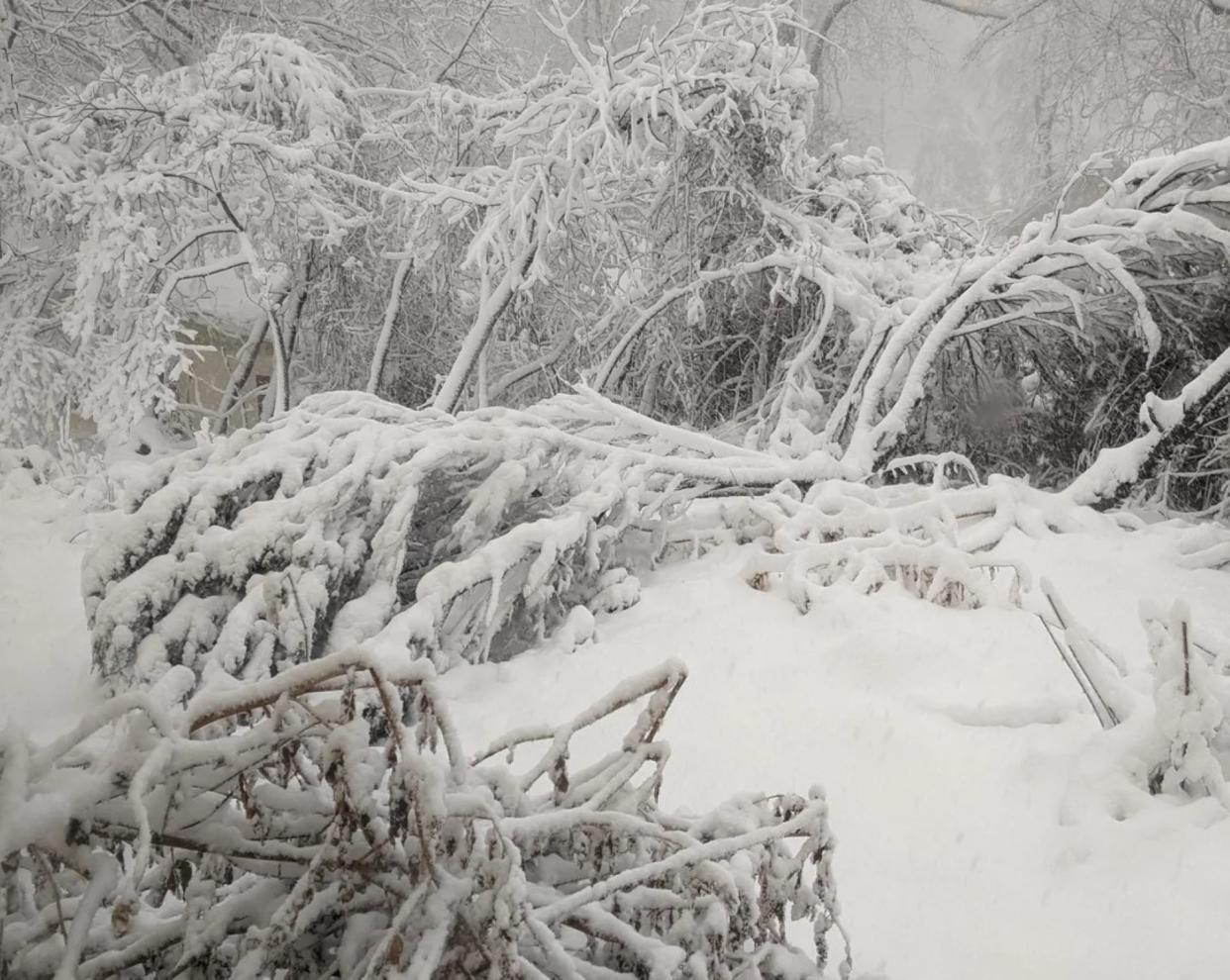Homeowner issues warning after making alarming backyard discovery amid heavy snow: ‘The whole thing comes crashing down’

A Redditor shared how devastating invasive species can be.
The post shows a mass of trees that had succumbed to the weight of a snowfall in Northern Virginia. Invasive vines had taken over and weakened the thicket, weaving “snow baskets and pulling down my native trees with the excess weight,” the poster wrote.
The Redditor named “Oriental bittersweet, porcelain berry, and English ivy” as the culprits.
All three were imported to the United States, and the National Park Service in 2014 tabbed the porcelain berry infestation at Dyke Marsh Wildlife Preserve — just up the Potomac River from the poster — as one of the seven occupiers most in need of eradication, according to the Virginia Native Plant Society.
Invasive species can include plants, trees, and animals. They outcompete native flora and fauna and harm ecosystems, costing the U.S. economy $21 billion per year.
About 42% of threatened or endangered species are at risk because of these invaders, according to the National Wildlife Federation.
“The direct threats of invasive species include preying on native species, outcompeting native species for food or other resources, causing or carrying disease, and preventing native species from reproducing or killing a native species’ young,” the NWF states.
“There are indirect threats of invasive species as well,” the NWF continues. “Invasive species can change the food web in an ecosystem by destroying or replacing native food sources. The invasive species may provide little to no food value for wildlife. Invasive species can also alter the abundance or diversity of species that are important habitat for native wildlife.”
Gardeners can help fight against invasive species by planting and nurturing native species while removing invasives. Sightings of invasive species should also be reported to local officials.
In the case of this trio and other invasive vines, elimination relies on constant vigilance. The nuisances need to be pulled up or cut back and prevented from flowering, fruiting, or producing seeds.
Other Reddiors shared their own horror stories of fighting with invasives in the comments.
“Around me, one of the main problematic vines is Asiatic bittersweet. I’ve spent the last year or so trying to get control of it on my property, and what I’ve learned about it so far from pulling up roots, etc, is that it kills trees in multiple ways,” commented one Redditor.
“First the vines girdle the trees so tightly it basically cuts off circulation … Also, the roots of the vines will also grow around the roots of the tree and strangle them. Because the vines are so aggressive and reach out to other trees, there may be multiple completely dead trees being held up by dense vine growth, with support from other nearby trees. So one big bad ice storm that makes things just heavy enough and the whole thing comes crashing down.”
Another said: “There are four yards that touch my backyard. My neighbors do nothing to control weeds or vines. Battle wisteria, english ivy, pepper vine, osage orange, Florida Bethany, everything else you can think of. Trying to keep it at bay takes up 90% of my yard help’s time. It is disgusting.”
Join our free newsletter for easy tips to save more, waste less, and help yourself while helping the planet.